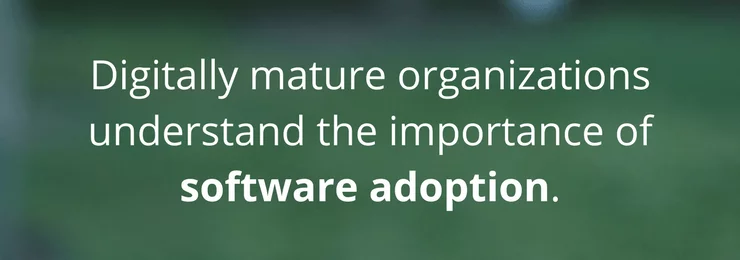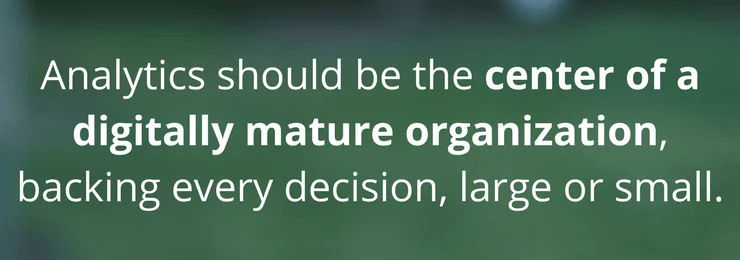Organizations, especially those not born into the digital era, are chasing after digital maturity. This process is known as “digital transformation” and once an organization gets to this end, they are considered “digitally mature.”
While most organizations are well on their way to being digitally mature, no one has quite reached that point yet. Digital transformation requires undergoing a complete revolution to see and embed technology in the core of the organization.

So, what is digital maturity?
Digital transformation requires the right technology, but this is only the first chapter of the story. Digital maturity is about integrating your organization’s operations and human capital in digital processes and vise versa.
But what does this look like? We’ve broken it down into three indicators.
1. Digitally mature organizations put tech at the center of operations
A “digitally mature workplace” means much more than just having the right tools to digitize and automate processes. Digital maturity means shaping entire operations around the right digital tools.
To have tech-centered operations means the organization is actually changing processes, not just using tech to do the same thing that was done before.
This difference can be seen in a new employee being prompted to login and input information directly in the company’s HR platform rather than filling out paperwork only to be manually entered later.
Another example is how technology changes the physical workspace, from office layout to hardware used. Once digital systems are in place, new practices can emerge that will drive employee productivity. Easy access to shared information, flexible work spaces, remote work are all fruit of digital maturity.
2. Digitally mature organizations have next-generation UX
OK, now let’s zoom in on how digitally mature organizations use their digital tools.
In order to promote digital fluency, software should be intuitive and easy for users to navigate. A digitally mature organization will have internally customized complex platforms to meet the organization’s’ needs and the users’ needs.
WalkMe’s Digital Adoption Platform (DAP) is one essential technology for optimizing digital tools for both organization and user needs. Building an empathetic interface for employees as end-users, drives higher adoption rates, which is a strong indicator of a digitally mature organization.

Digitally mature organizations understand the importance of software adoption. If an employee cannot take advantage of a platform’s features and functions, the organization will not see a positive ROI.
Given that adopting new digital transformation tools in a digital landscape, setting up an effective training and onboarding strategy is imperative. Having next-generation UX built into your digital tools is how to get there.
Try WalkMe’s DAP to ensure a smooth onboarding process for your employees.
3. Digitally mature organizations are data-driven
Another indicator of digital maturity is data-driven decision making.
Good data can drive growth and efficiency in every department. And the value of data is only increasing at an exponential rate.
When utilized correctly, analytics should be the center of a digitally mature organization, backing every decision, small or large.
It’s true that organizations were using data to make decisions even before we started hearing this term “digital transformation”. However, the methods used to collect data and the data we can collect has made (and will continue to make) significant leaps in value.
These leaps allow an organization to make data-driven decisions for marketing, sales, and even human capital. But it’s not just the big picture decisions that are affected: digitally mature organizations have the technology to see minute and granular trends with advanced insights into their data.
To be a digitally mature organization, it is necessary to employ a strategy for organizing, governing, analyzing, and deploying data, including hiring data-management professionals who can extract the hidden gems from mountains of numbers.

What comes after digital maturity?
Once an organization is tech-centered, has next-generation UX and is data-driven, it will presumably be more efficient than any company we see today. Digitization, automation, machine learning, and artificial intelligence have made an incredible impact already; given their full adoption, these technologies will likely have completely transformed what, why, and especially how we conduct business in the future.
Now we wonder, what does that look like?

